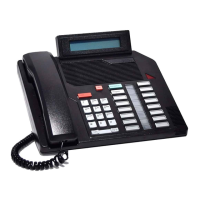3-1
DPP Product Guide DPP001 and up
3-
3
3
3
3
DPP Software
System description - software
Overview
The DPP is an intelligent peripheral of the DMS-100, capable of making
decisions without guidance from the DMS-100 CC. The DPP activities are
controlled by software resident in the DPP. The internal architecture of the
DPP is closely related to the task structure of the software modules. The
software is divided into two fundamental areas:
• Monitor routines
• Application routines.
Monitor routines are stored in firmware to provide allocation of physical
resources and a center for process structuring. Download instructions and
communication support programs are also located in the monitor routines.
Application routines are higher level software modules that are identified
closely with system objectives such as specific report generation or AMA
record processing.
The DPP architecture makes use of a distributed processing scheme (that is, a
group of microprocessors working together) to increase system throughput by
accomplishing tasks in parallel. The Disk/SCSI interface and DSI circuits
have dedicated microprocessors which execute routines specifically tailored
to their activities. The main DPP processor is freed of these tasks and can
handle other system tasks rapidly with a minimum number of interruptions.
Monitor routines
System instructions that must be present for the DPP to operate are referred to
as the monitor routines. One of the modules that make up the monitor is
referred to as the boot program. A boot program contains the necessary
features required for initial start up of the basic DPP; for example, disk
operation and memory allocation. The boot program is stored in EPROM,
and is available upon power up. Monitor routines are classified into groups
based on their effect on the DPP.
11

